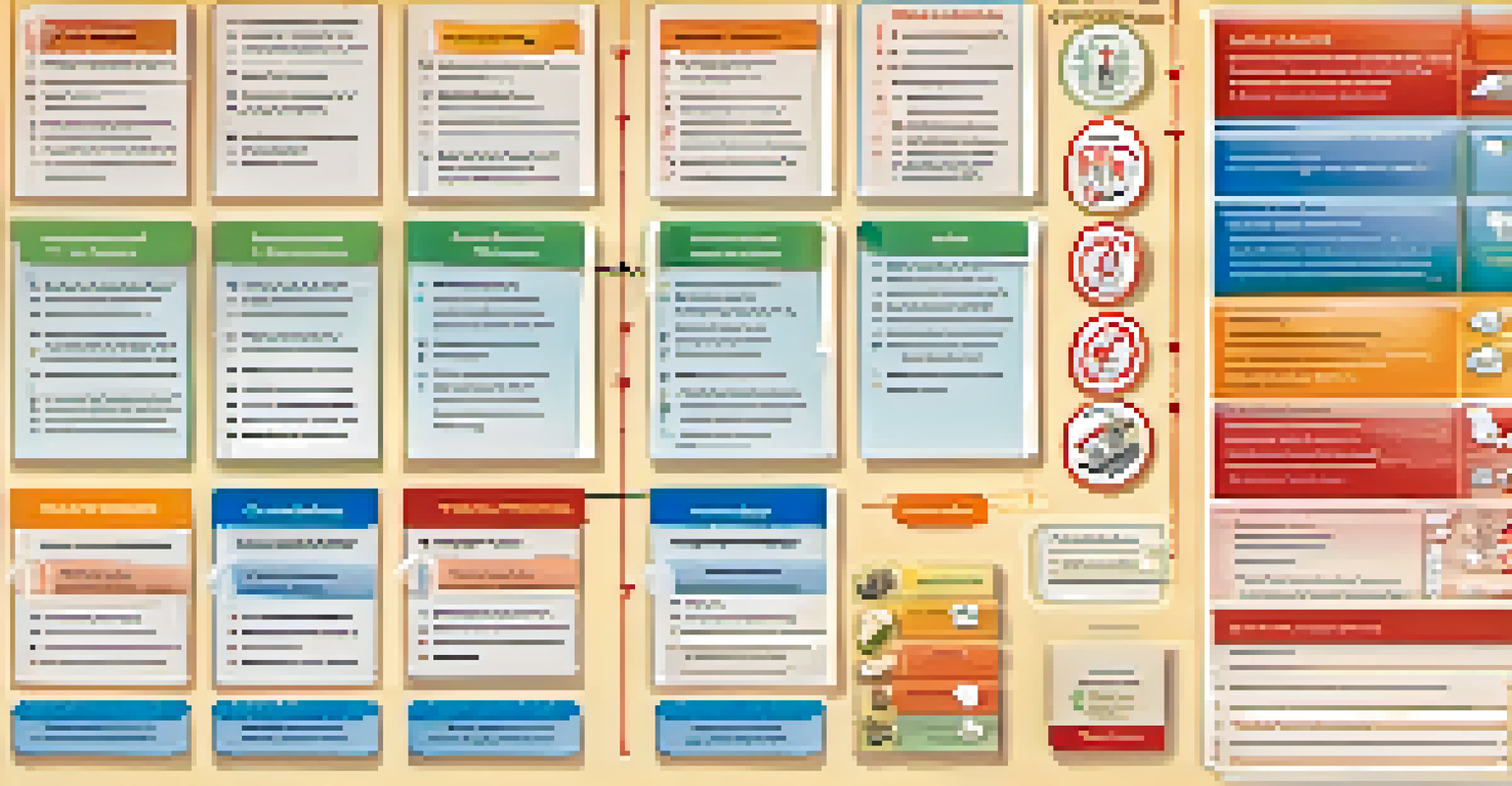Understanding the Role of Anaphylaxis in Food Allergies

What is Anaphylaxis and How Does It Occur?
Anaphylaxis is a severe, potentially life-threatening allergic reaction. It can occur within minutes of exposure to an allergen, such as certain foods, medications, or insect stings. The body’s immune system overreacts, releasing a flood of chemicals that can cause symptoms throughout various systems.
Anaphylaxis is a life-threatening allergic reaction that can occur within minutes of exposure to an allergen.
The most common culprits for food-induced anaphylaxis are peanuts, tree nuts, shellfish, fish, milk, eggs, soy, and wheat. These reactions can manifest dramatically, leading to symptoms like swelling, difficulty breathing, and a rapid drop in blood pressure. This swift response underscores the critical need for awareness among those with food allergies.
Understanding how anaphylaxis occurs is vital for those at risk, as it emphasizes the importance of avoiding known allergens. It also highlights why having an emergency plan and treatment options, like epinephrine auto-injectors, is crucial for immediate response.
Recognizing the Symptoms of Anaphylaxis
Recognizing anaphylaxis symptoms can be the difference between life and death. Initial signs often include hives, swelling of the face or lips, and difficulty breathing. These symptoms can escalate rapidly, so it’s essential to act quickly.

Other symptoms may include stomach cramps, vomiting, or diarrhea. As the reaction progresses, individuals might experience a sense of doom or confusion, indicating a drop in blood pressure. Being aware of these symptoms can empower both individuals with allergies and those around them to respond appropriately.
Anaphylaxis is a serious condition
Anaphylaxis is a severe allergic reaction that can occur rapidly, necessitating immediate awareness and response.
If you suspect anaphylaxis, it’s crucial to treat it as an emergency. Calling for help and administering epinephrine as soon as possible can save a life, reinforcing the need for education on recognizing these critical signs.
The Importance of Immediate Response to Anaphylaxis
Immediate response to anaphylaxis is vital, as delayed treatment can lead to severe outcomes. The first line of defense is the quick administration of epinephrine, which can reverse symptoms and stabilize the individual. This underscores the importance of having an epinephrine auto-injector readily available.
The best way to manage food allergies is to avoid allergens and be prepared for emergencies.
After administering epinephrine, it’s essential to seek emergency medical help. Even if symptoms seem to improve, a second wave of symptoms can occur, called biphasic anaphylaxis. Understanding this can help individuals and caregivers stay vigilant during and after a reaction.
Education plays a key role in ensuring that those at risk and their loved ones know how to respond effectively. Training on recognizing symptoms and using an auto-injector properly can be life-saving in critical moments.
Creating an Anaphylaxis Action Plan
An anaphylaxis action plan is a personalized guide that outlines what to do in case of an allergic reaction. It should include clear instructions on recognizing symptoms, using an epinephrine auto-injector, and when to seek medical help. Crafting this plan with healthcare providers is essential for effective management.
In addition to emergency procedures, the plan should detail how to avoid triggers. This might include reading food labels carefully, communicating allergies to others, and wearing medical alert identification. Having this information readily accessible can empower individuals and their families.
Recognizing symptoms is crucial
Identifying symptoms like hives and difficulty breathing can empower individuals to act quickly in emergencies.
Regularly reviewing and practicing the action plan can enhance preparedness. Just like a fire drill, knowing what to do in an emergency can reduce panic and improve response time when it matters most.
The Role of Allergen Exposure in Anaphylaxis
Understanding how allergen exposure contributes to anaphylaxis is key for those with food allergies. Even small amounts of an allergen can trigger a severe reaction, making strict avoidance critical. This highlights the importance of allergen awareness in various environments, such as schools and restaurants.
Cross-contamination is another concern that can lead to unexpected exposure. For example, using the same utensils or surfaces for allergenic foods can introduce allergens into safe foods. Being vigilant about food preparation and sharing is essential in preventing accidental exposure.
Education on cross-contamination and safe food practices can significantly reduce the risk of anaphylaxis. Empowering individuals with knowledge helps them navigate their environments confidently, reducing anxiety around food allergies.
Living with Food Allergies and Anaphylaxis
Living with food allergies and the threat of anaphylaxis can be challenging, but it’s entirely manageable with the right strategies. It involves constant vigilance, but many people lead fulfilling lives by prioritizing safety and education. This proactive approach helps mitigate risks and fosters a sense of normalcy.
Support networks, including friends, family, and online communities, can make a significant difference. Sharing experiences and tips can provide comfort and practical advice. Connecting with others who understand the challenges of food allergies can also create a sense of belonging.
Create an action plan
An anaphylaxis action plan outlines essential steps for managing allergic reactions and avoiding triggers effectively.
Moreover, ongoing education and awareness campaigns can further enhance understanding of food allergies and anaphylaxis. The more people know about these conditions, the better equipped they will be to support those affected.
The Future of Food Allergy Research and Treatment
Research on food allergies and anaphylaxis is rapidly evolving, promising hope for better treatments and potential cures. Recent studies are exploring desensitization therapies, where individuals gradually become less sensitive to allergens. This could revolutionize the way allergies are managed in the future.
Additionally, advancements in technology, such as mobile apps for tracking allergens and symptoms, are enhancing safety for those at risk. These tools can provide real-time alerts and resources, making it easier to live with food allergies. Staying informed about these innovations can empower individuals to take control of their health.

As research progresses, it’s crucial for individuals with food allergies to stay engaged and informed. Participating in clinical trials or advocating for awareness can contribute to a future where food allergies are better understood and managed.